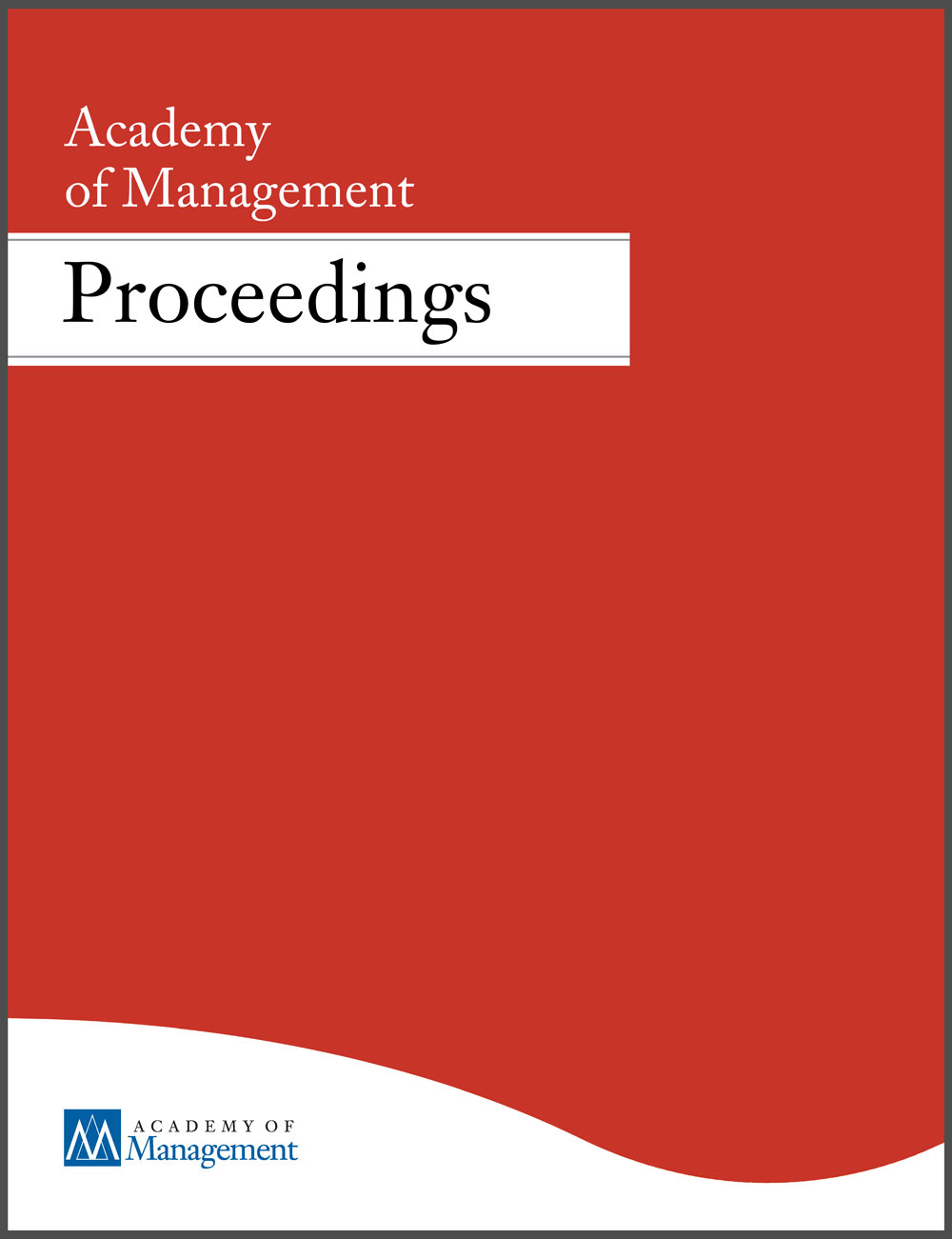Academic articles
Practitioner articles
Working papers
Books
Book chapters
Case studies
Other publications
Subject(s)
Human resources management/organizational behavior
Keyword(s)
innovation, communication, leadership
Subject(s)
Information technology and systems; Management sciences, decision sciences and quantitative methods; Technology, R&D management
Keyword(s)
information design, supply chain management, newsvendor model, forecast sharing
This paper studies an information design problem of a retailer in a two-tier supply chain that procures a single type of product from a supplier. The supplier needs to decide on a production quantity by balancing the shortage cost and the excess inventory holding cost with respect to the retailer’s demand. The retailer’s demand is random but the retailer receives an informative signal about the demand before the supplier sets the production quantity, and places orders after learning the demand realization. The retailer wants to reduce the shortage cost, and to this end she can disclose information about her signal to persuade the supplier to increase production levels. For this setup, we characterize the optimal information disclosure policy of the retailer, and shed light on settings where the retailer strictly benefits from carefully designed information disclosure policies relative to a full- or a no-disclosure policy.
© 2024, INFORMS
ISSN (Online)
1526-5501
ISSN (Print)
0025–1909
Subject(s)
Economics, politics and business environment
Keyword(s)
Market Power, Search and Matching, Wages
JEL Code(s)
J31, J42
Volume
91
Journal Pages
3569–3607
Subject(s)
Economics, politics and business environment
Keyword(s)
Trade platform, hybrid business model, antitrust policy, tax policy
JEL Code(s)
D42, L12, L13, L40, H25
We provide a canonical and tractable model of a trade platform enabling buyers and sellers to transact. The platform charges a percentage fee on third-party product sales and decides whether to be "hybrid", like Amazon, by selling its own product. It thereby controls the number of differentiated products (variety) it hosts and their prices. Using the mixed market demand system, we capture interactions between monopolistically competitive sellers and a sizeable platform product. Using long-run aggregative games with free entry, we endogenize seller participation through an aggregate variable manipulated by the platform's fee. We show that a higher quality (or lower cost) of the platform's product increases its market share and the seller fee, and lowers consumer surplus. Banning hybrid mode benefits consumers. The hybrid platform might favor its product and debase third-party products if the own product advantage is sufficiently high. We also provide some tax policy implications.
© 2024 The Author(s). The RAND Journal of Economics published by Wiley Periodicals LLC on behalf of The RAND Corporation.
Volume
55
Journal Pages
684–718
Subject(s)
Strategy and general management; Technology, R&D management
Keyword(s)
deep-tech innovation, lean startup, science-based innovation, biotechnology, space technology, material science, quantum computing
JEL Code(s)
O32
ISSN (Print)
0017-8012
Subject(s)
Health and environment; Management sciences, decision sciences and quantitative methods
Keyword(s)
mechanism design, information asymmetry, moral hazard, sustainable operations
JEL Code(s)
D21, D82, D86
Volume
72
Journal Pages
1843–1860
Subject(s)
Entrepreneurship
Alexander and Lorenzo were at a crossroads with their biotech startup, PhagoMed. They had left high-profile positions at Boston Consulting Group (BCG) three years earlier, driven by a bold vision to tackle the global crisis of antibiotic resistance using phages, viruses with the remarkable ability to target specific bacteria. Despite a robust commitment to R&D yielding deeper insights into phage biology, the journey from lab to clinic was frustratingly slow. And with their capital dwindling, they faced the urgent need to reassess their strategic direction and resource allocation.
| buy now | buy now | buy now |
Subject(s)
Human resources management/organizational behavior
Keyword(s)
social network, agency, emotions, personality
While decades of research have demonstrated that networks, through their structural configurations, powerfully influence people’s behaviors, attitudes, and outcomes, recent work has sought to better understand the role of individuals in shaping network processes. There are increasing appeals to devote greater attention to the differences individuals exhibit in establishing, managing, and navigating social relations. Accumulated evidence underlines that 1) individuals may be able to actively position themselves in the network and that 2) agency and purposive action may look different for certain individuals despite occupying similar network positions. In response to these emerging discussions, our symposium aims to contribute to a better understanding of individual agency in network theory. Questions include: What role do individuals play in shaping the process of network evolution? And, how do these dynamics impact the distribution of social capital (positive or negative) among actors within networks? This line of work provides a promising starting point for network agency research. Our presenters’ research highlights that a productive conceptualization of individual agency within organizational networks should be multifaceted. People might strategically leverage social relations and network relations for their own sake without meaningfully changing the structure of their networks. They can also take actions that meaningfully shape the architecture of their networks, intentionally or otherwise. During the processes of individuals exerting agency in shaping their social relations and exploiting network-related advantages, numerous potential mechanisms exist and should be systematically elaborated.
With permission of the Academy of Management
Volume
2024
ISSN (Online)
2151-6561
ISSN (Print)
0065-0668
Subject(s)
Technology, R&D management
Keyword(s)
augmentation, automation, task routinization, human capital, crowd science, algorithmic management
Artificial intelligence (AI) is diffusing rapidly throughout the economy, raising questions regarding its impact on human workers. Current theories predict that the degree to which humans are replaced (automation) or supported (augmentation) will depend on characteristics of the task such as its degree of routinization and manual vs. cognitive nature. Yet, existing empirical evidence tends to come from aggregate occupation data or individual case studies, with limited research using larger samples of projects or tasks. Moreover, whether and how AI is implemented may not only depend on task characteristics but also on managers’ objectives, which may go beyond narrow efficiency to include benefits resulting from human employment itself (“employment goals”). We provide novel empirical evidence using data from more than 1,200 research projects that involve crowd members in different tasks such as data collection, data analysis, or creative problem solving. We confirm that the use of AI is associated with task characteristics, although the patterns are more nuanced than those shown in work on prior automation technologies such as computers and robots. Moreover, we find that managers pursuing employment goals are less likely to use AI for automation, while they are just as likely as others to use AI to augment the work of human workers. We contribute to the literature on AI adoption in organizations by providing rare evidence from project-level data, and by highlighting that the path towards “good AI” or “bad AI” is, partly, a matter of human choice.
With permission of the Academy of Management
Volume
2024
ISSN (Online)
2151-6561
ISSN (Print)
0065-0668
Subject(s)
Technology, R&D management
Keyword(s)
research questions, experiential knowledge, crowd science
Recently, organizations started exploring the use of crowdsourcing not only to solve pre-defined problems, but also to identify novel problems worth solving – not least in the hopes of more effectively aligning research and innovation agendas with issues of societal relevance. Yet, a key challenge is that many crowd-identified problem statements are not novel and simply re-state well-known problems, resulting in an ineffective way to organize problem identification. In this study, we theorize that the extent of “user knowledge” among crowd members, which can be acquired both through one's own experience as someone affected by a particular situation (e.g., as a patient) and through engagement with the experiences of others (e.g., as a caretaker or medical professional), increases the novelty of problem statements. In addition, we explore whether the novelty of crowd-identified problem statements might be improved by providing crowd members with two types of complementary knowledge related to the problem space: declarative and procedural. Our preliminary results from a large-scale online experiment show a significant positive relationship between “user knowledge” of crowd members and the novelty of the problem statements they submit. Providing crowd members with complementary knowledge related to the problem space does not lead to significant novelty improvements, according to our preliminary analysis. Nevertheless, these initial findings indicate that the impact of experiential knowledge in problem-solving also applies to problem finding. This has significant implications for organizations aiming to effectively utilize crowdsourcing for establishing their research and innovation agendas.
With permission of the Academy of Management
Volume
2024
ISSN (Online)
2151-6561
ISSN (Print)
0065-0668



